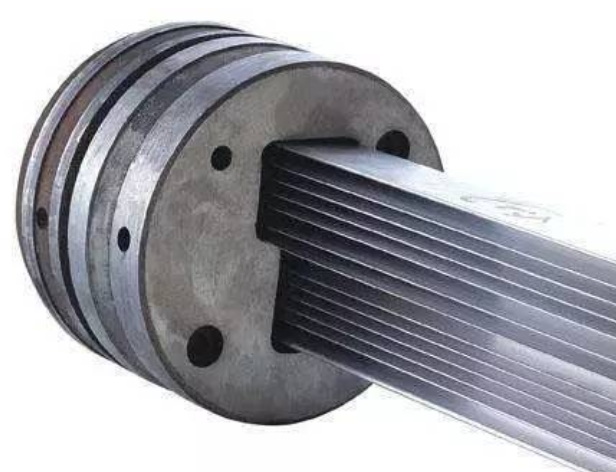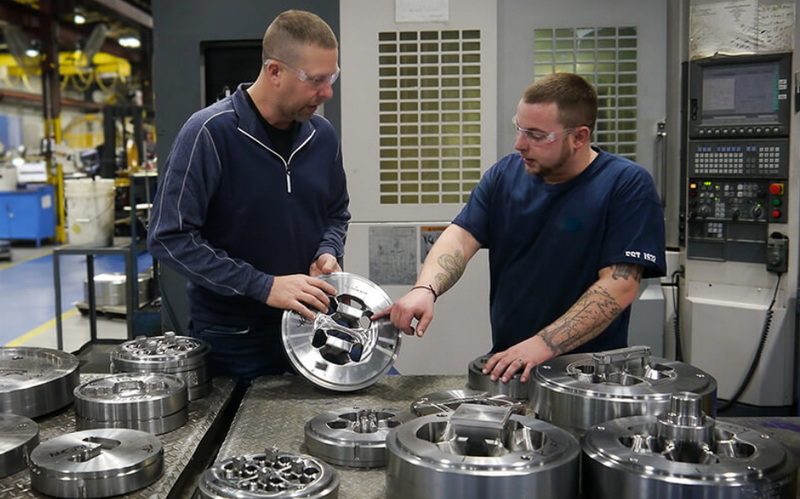Content Menu
● Understanding Aluminum Extrusion
● The Role of the Die Slide in Aluminum Extrusion
>> Key Functions of the Die Slide
● How the Die Slide Improves Production Efficiency
>> 1. Reduced Setup Time
>> 2. Enhanced Precision and Quality
>> 3. Improved Thermal Management
>> 4. Increased Press Uptime
● Advancements in Die Slide Technology
>> 1. Automated Die Change Systems
>> 2. Integrated Sensors and Monitoring
>> 3. Modular Design
● Best Practices for Maximizing Die Slide Efficiency
● Case Studies: Die Slide Efficiency in Action
>> Case Study 1: Automotive Parts Manufacturer
>> Case Study 2: Building Products Company
● Future Trends in Die Slide Technology
● Conclusion
● Frequently Asked Questions
>> 1. What is the primary function of an aluminum extrusion press die slide?
>> 2. How does the die slide contribute to reduced setup times?
>> 3. What maintenance is required for an aluminum extrusion press die slide?
>> 4. Can upgrading the die slide improve the quality of extruded products?
>> 5. How does the die slide interact with other components of the extrusion press?
● Citations:
Aluminum extrusion is a widely used manufacturing process that plays a crucial role in various industries, from construction to automotive. At the heart of this process lies the aluminum extrusion press die slide, a component that significantly enhances production efficiency. This article will explore how the die slide contributes to improved productivity, examining its design, functionality, and impact on the overall extrusion process.

Understanding Aluminum Extrusion
Before delving into the specifics of the die slide, it's essential to understand the basics of aluminum extrusion. This process involves forcing heated aluminum billets through a die to create profiles with specific cross-sectional shapes[1]. The resulting extruded products are used in countless applications, from window frames to heat sinks.
The extrusion process typically involves the following steps:
1. Billet preheating
2. Container loading
3. Ram advancement
4. Profile extrusion
5. Profile cooling and handling
The Role of the Die Slide in Aluminum Extrusion
The aluminum extrusion press die slide is a critical component that supports and aligns the die tooling for the profile as a unit[3]. It's located between the container and press, playing a vital role in the smooth operation of the extrusion process.
Key Functions of the Die Slide
1. Die Support: The die slide holds and secures the extrusion die in place during the extrusion process.
2. Alignment: It ensures proper alignment between the die and the container, which is crucial for producing high-quality extrusions.
3. Quick Die Changes: The die slide facilitates rapid die changes, minimizing downtime between production runs.
4. Thermal Management: Some advanced die slides incorporate cooling systems to help maintain optimal die temperatures.
How the Die Slide Improves Production Efficiency
The aluminum extrusion press die slide contributes to production efficiency in several ways:
1. Reduced Setup Time
One of the most significant advantages of a well-designed die slide is its ability to reduce setup time between extrusion runs. By allowing for quick and easy die changes, the die slide minimizes production downtime[5]. This is particularly important in facilities that produce a variety of extrusion profiles, as it allows for greater flexibility and responsiveness to customer demands.
2. Enhanced Precision and Quality
The precise alignment provided by the die slide ensures that the extrusion die is perfectly positioned relative to the container and ram. This alignment is crucial for producing high-quality extrusions with consistent dimensions and surface finishes[3]. By minimizing misalignment issues, the die slide helps reduce scrap rates and improve overall product quality.
3. Improved Thermal Management
Advanced die slides often incorporate cooling systems that help maintain optimal die temperatures throughout the extrusion process. Proper temperature control is essential for achieving the desired mechanical properties and surface quality of the extruded profiles[1]. By preventing overheating, the die slide helps maintain consistent extrusion speeds and reduces the risk of defects.
4. Increased Press Uptime
The robust design of modern die slides contributes to increased press uptime. By providing stable support for the die and facilitating smooth die changes, the die slide helps reduce the likelihood of press malfunctions and unscheduled maintenance[15]. This increased reliability translates directly into improved production efficiency.
Advancements in Die Slide Technology
Recent years have seen significant advancements in aluminum extrusion press die slide technology, further enhancing their contribution to production efficiency:
1. Automated Die Change Systems
Some modern extrusion presses feature automated die change systems that work in conjunction with the die slide. These systems can dramatically reduce die change times, sometimes to as little as a few minutes[7]. This automation not only improves efficiency but also reduces the risk of operator error during die changes.
2. Integrated Sensors and Monitoring
Advanced die slides may incorporate sensors that monitor various parameters such as temperature, pressure, and alignment. This real-time data can be used to optimize the extrusion process, detect potential issues before they lead to downtime, and ensure consistent product quality[15].
3. Modular Design
Some manufacturers are adopting modular die slide designs that allow for easier maintenance and upgrades. This approach can reduce downtime for repairs and make it easier to incorporate new technologies as they become available[12].
Best Practices for Maximizing Die Slide Efficiency
To fully leverage the benefits of the aluminum extrusion press die slide, extrusion plants should adhere to the following best practices:
1. Regular Maintenance: Implement a rigorous maintenance schedule for the die slide, including lubrication, alignment checks, and wear inspections[15].
2. Operator Training: Ensure that press operators are well-trained in proper die slide operation and maintenance procedures.
3. Optimization of Die Design: Work closely with die designers to create dies that are optimized for use with the specific die slide system in place[3].
4. Temperature Control: Implement robust temperature control systems to maintain optimal die and billet temperatures throughout the extrusion process[1].
5. Data Analysis: Utilize data collected from integrated sensors to continuously optimize the extrusion process and identify areas for improvement.

Case Studies: Die Slide Efficiency in Action
To illustrate the real-world impact of efficient die slide systems, let's examine two case studies:
Case Study 1: Automotive Parts Manufacturer
A leading automotive parts manufacturer implemented a new aluminum extrusion press with an advanced die slide system. The results were significant:
- Die change time reduced from 45 minutes to 10 minutes
- Overall equipment effectiveness (OEE) increased by 15%
- Scrap rate decreased by 8%
- Annual production capacity increased by 22%
Case Study 2: Building Products Company
A building products company upgraded their existing extrusion press with a modern die slide system:
- Setup time between different profile runs reduced by 60%
- Product quality consistency improved by 12%
- Energy consumption per ton of extruded product decreased by 7%
- Annual maintenance costs reduced by 18%
These case studies demonstrate the tangible benefits that an efficient aluminum extrusion press die slide can bring to production efficiency.
Future Trends in Die Slide Technology
As the aluminum extrusion industry continues to evolve, we can expect to see further advancements in die slide technology:
1. AI-Powered Optimization: Artificial intelligence algorithms may be used to optimize die slide settings in real-time, based on various process parameters.
2. Advanced Materials: New materials with improved wear resistance and thermal properties may be developed for die slide components.
3. Integrated Additive Manufacturing: Some die slide components may be produced using additive manufacturing techniques, allowing for more complex geometries and improved performance.
4. Enhanced Automation: Further automation of die change processes and integration with overall plant management systems.
5. Sustainability Focus: Development of die slide systems that contribute to reduced energy consumption and improved material utilization in the extrusion process.
Conclusion
The aluminum extrusion press die slide plays a crucial role in improving production efficiency in the extrusion process. By facilitating quick die changes, ensuring precise alignment, and contributing to thermal management, the die slide helps extrusion plants reduce downtime, improve product quality, and increase overall productivity.
As technology continues to advance, we can expect to see further improvements in die slide design and functionality, leading to even greater efficiencies in aluminum extrusion. Companies that invest in modern die slide systems and adhere to best practices in their operation and maintenance will be well-positioned to meet the growing demand for high-quality extruded aluminum products across various industries.

Frequently Asked Questions
1. What is the primary function of an aluminum extrusion press die slide?
The primary function of an aluminum extrusion press die slide is to support and align the extrusion die during the extrusion process. It ensures proper positioning of the die relative to the container and ram, facilitates quick die changes, and often contributes to thermal management of the die.
2. How does the die slide contribute to reduced setup times?
The die slide contributes to reduced setup times by allowing for quick and easy die changes. Modern die slides are designed to facilitate rapid removal and installation of dies, often incorporating features like automated clamping systems or modular designs that minimize the time required to switch between different extrusion profiles.
3. What maintenance is required for an aluminum extrusion press die slide?
Regular maintenance for an aluminum extrusion press die slide typically includes:
- Lubrication of moving parts
- Inspection for wear and alignment
- Cleaning of surfaces and cooling channels (if present)
- Checking and tightening of fasteners
- Calibration of any integrated sensors or monitoring systems
4. Can upgrading the die slide improve the quality of extruded products?
Yes, upgrading the die slide can improve the quality of extruded products. A modern, well-designed die slide ensures better alignment between the die and the container, which can lead to more consistent extrusion dimensions and improved surface finishes. Additionally, advanced die slides with integrated cooling systems can help maintain optimal die temperatures, further enhancing product quality.
5. How does the die slide interact with other components of the extrusion press?
The die slide interacts closely with several other components of the extrusion press:
- It interfaces with the container, ensuring proper alignment for the extrusion process
- It holds and positions the extrusion die
- It may interact with the press's cooling systems to manage die temperature
- In some advanced systems, it may communicate with the press control system to provide data on alignment, temperature, or other parameters
Citations:
[1] https://aec.org/extrusion-die-process-application
[2] https://www.howardprecision.com/what-is-the-difference-between-extruded-aluminum-and-cast-aluminum/
[3] https://geminigroup.net/understanding-aluminum-extrusion-dies/
[4] https://www.youtube.com/watch?v=P8BWQBP4Vhk
[5] https://journalmt.com/getrevsrc.php?identification=public&mag=mft&raid=1581&type=fin&ver=3
[6] https://www.youtube.com/watch?v=Y75IQksBb0M
[7] https://www.youtube.com/watch?v=Uvl4iXq98KM
[8] https://www.linkedin.com/pulse/some-ways-improving-extrusion-production-efficiency-stan-hua
[9] https://www.youtube.com/watch?v=SVFWjogvGOc
[10] https://extrusion-dies.ru/assets/files/Aluminum_Extrusion_Technology_P_Saha.pdf
[11] https://spectraaluminum.com/what-shapes-can-aluminum-extrusion-be/
[12] https://dl.asminternational.org/technical-books/monograph/148/chapter/2568390/Extrusion-Die-and-Tooling
[13] https://bor-usa.com/what-is-aluminum-extrusion/
[14] https://aec.org/extrusion-die-process-application
[15] https://www.castool.com/wp-content/uploads/2024/03/The-Maintenance-of-Extrusion-Presses.pdf
[16] https://www.youtube.com/watch?v=CwGimohCH8A
[17] https://rextrusion.en.made-in-china.com/product/JZFfuEgDYYWb/China-Hollow-Die-Slide-Die-Aluminium-Profile-Extrusion-Moulds.html






















